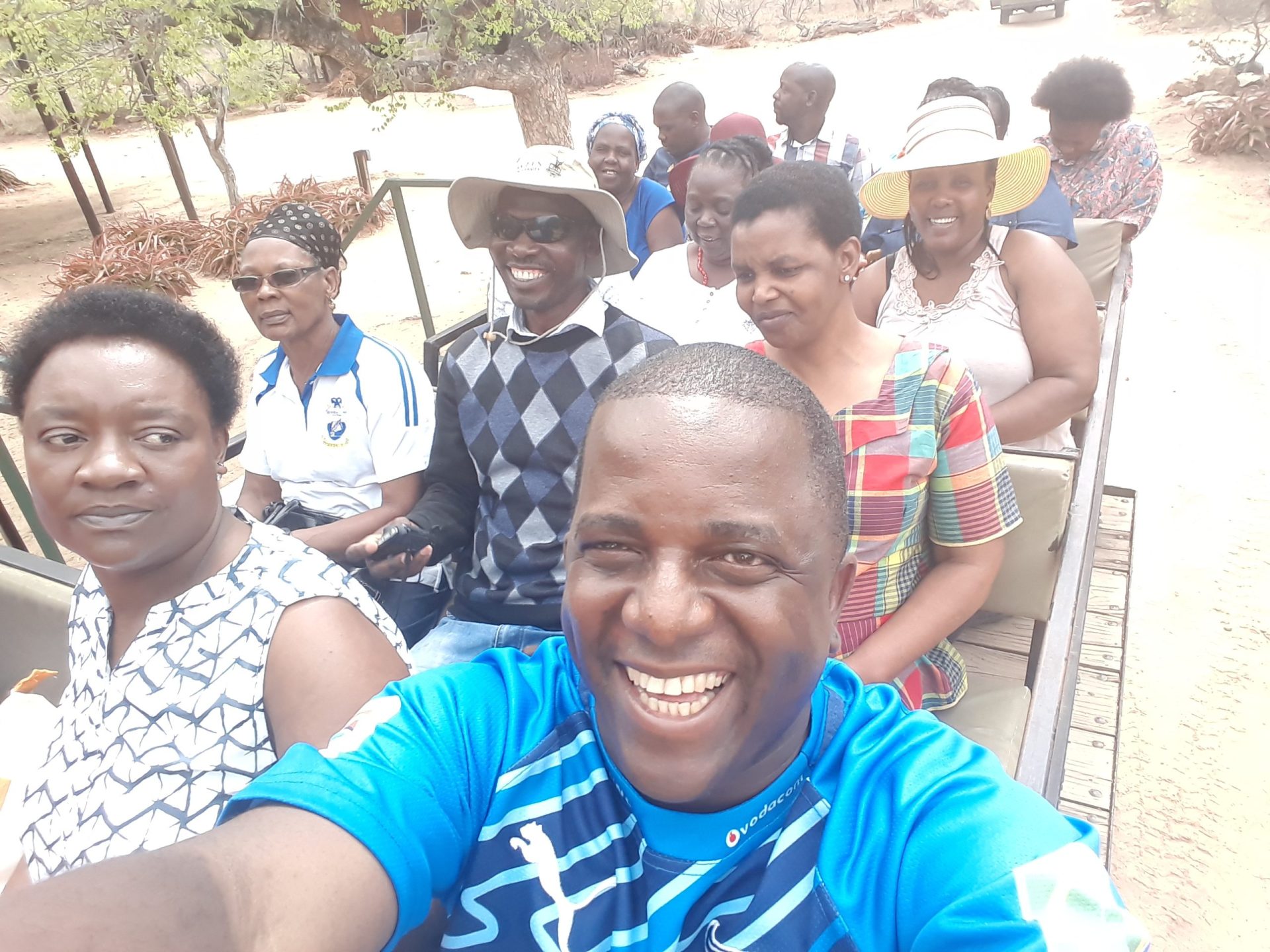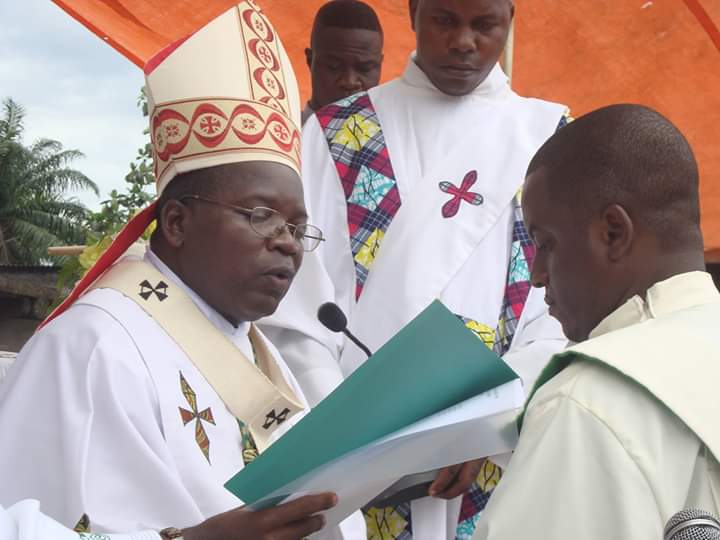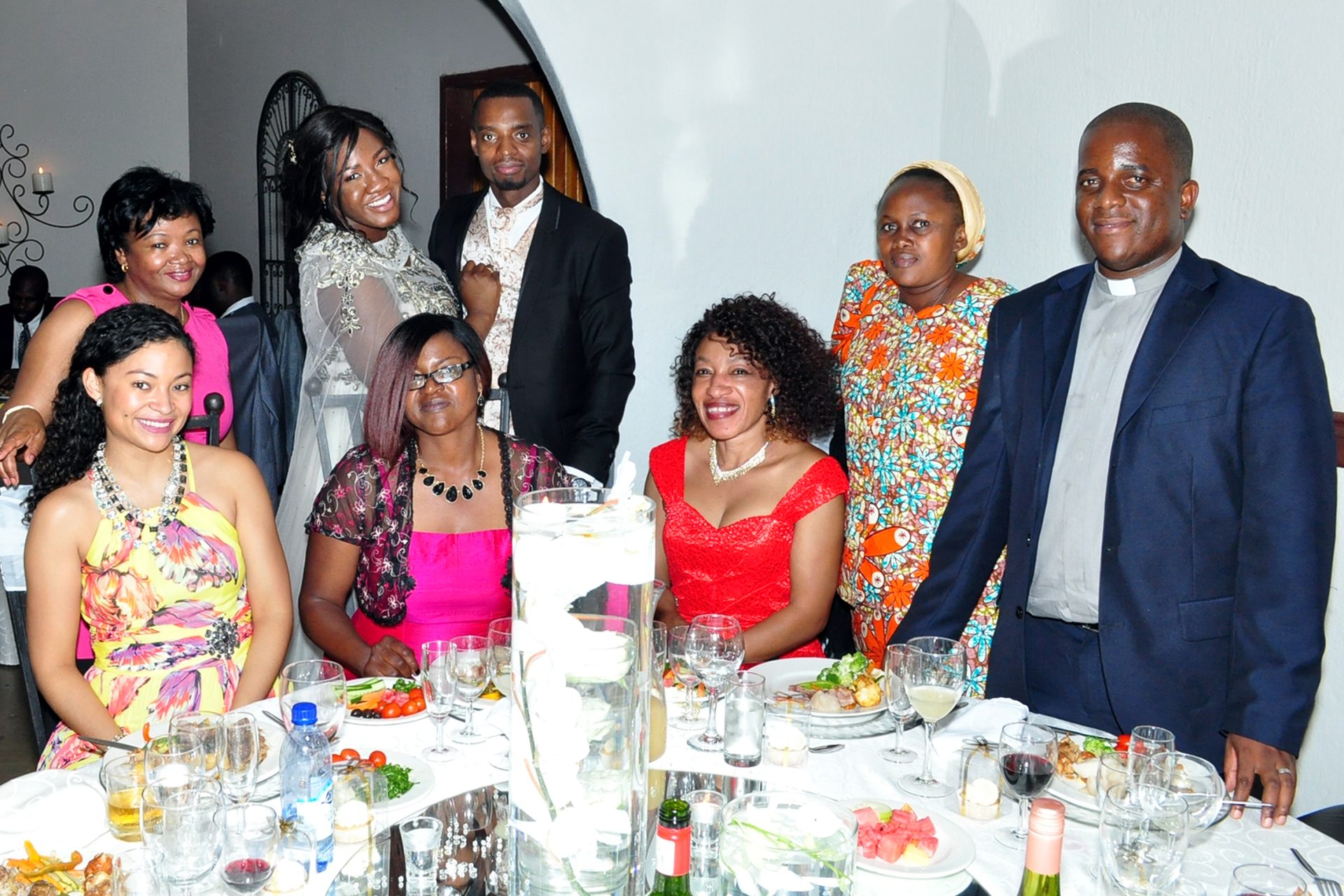This story was first published in New People, a publication of the Comboni Missionaries in Kenya.






A young boy sees a cameleer painted in one of his father’s frescos. He asks for his name. The answer is a revelation. Gradually, he discards the camel and falls in love with that man and with all he stands for: “love for the most abandoned.” And he makes it the reason for his life.
By Missay Soku Jérôme, Mccj
I was born in 1978 in Kisangani (DR Congo). My parents were staunch Catholics, and their faith influenced me deeply. The way they loved each other, cared for their family and were concerned with the neighbours, especially those most in need, was for me an example to follow. Today I know that God was already at work, shaping, leading and making me into what he had planned for me to become, if only I would allow him in my life.
My father was a born artist in many ways. He trained me to draw and paint, and to sing. Comboni Missionaries ran our parish and they would make use of his art to decorate churches, chapels and halls. In quite a number of his canvas, there appeared the face of a man with a turban; even his studio was littered with sketches by pencil of the same face. I remember the day – I must have been six years old – I accompanied him to a faraway chapel of the parish where he had being going for months to beautify it with frescos. When I entered, the first thing I saw was the face of that man, now portrayed while riding superbly a camel in the desert.
My question must have surprised dad: “Who is that Arab on the camel?” He laughed out aloud and told me that the cameleer was, in fact, an Italian missionary, named Daniel Comboni, who had worked hard to free African slaves from the hands of greedy Arabs. That face and that name imprinted themselves in my memory so deeply that they would never disappear. It was only a matter of time: eventually, that ‘fake cameleer’ produce a profound transformation in me.
Still a young boy, I entered the minor seminary. My life went on smoothly, without any particular jolts. I took it for granted that I would be a diocesan priest, and my family was happy with that decision of mine. However, the face of that ‘non-Arab’ cameleer – stubbornly present in my memory – was preparing to launch his final attack.
In April 1995, a decree of Pope John Paul II confirmed that the sudden recovery of an Afro-Brazilian child from a desperate health situation, after the child’s family and the hospital staff had turned to Comboni’s intercession, was indeed a miracle, and that he would declare him blessed on March 17, 1996.
FOR A WHOLE YEAR, the Comboni missionaries in DR Congo prepared the great event by organising conferences, symposia, celebrations in all parishes and schools. One evening, they came also to the seminary where I was quietly intent on my studies. The presentation they made of Comboni’s life and charism and the description of their work in Africa fascinated me. Two things, in particular, excited my mind and heart: Comboni’s motto – “Either Africa or death” – and his dream: “The African missionaries to themselves,” that is, evangelisers of their own continent.
It was as if sensations, desires and aspirations, long hidden in my subconscious, suddenly had emerged, clearly verbalised for me. I had only to accept, digest them, and make them my own flesh and blood. I decided, however, not to let myself be carried away by that stimulating inspiration, but to subject it to a serious process of guided discernment. It took me three years to surrender totally to that strong desire, convinced that it was God’s will for me.
I JOINED THE COMBONI INSTITUTE as a postulant, in Kisangani in October 1999. Unfortunately, what could have been a honeymoon soon turned into a nightmare for me.
There were 15,000 Ugandan and 19,000 Rwandan troops on Congolese soil. Laurent Kabila had designated Kisangani the forward base for the foreign forces, as he marched towards Kinshasa to overthrow Mobutu Sese Seko. That alliance of foreign military forces disintegrated, when people of Hutu descent were massacred by the thousands in western Zaire. Kisangani became the site of the first open fighting between Ugandan and Rwandan forces, and nearly 3,000 people died in the crossfire. The fighting led to the destruction of about a quarter of the city. Further clashes between the two armies led to thousands more deaths and widespread destruction from 5th to 11th June 2000.
Many of my relatives and friends were killed in that horrible war. I myself was taken hostage to a Ugandan camp until the end of the war, spending my time with orphaned families and injured people. The memory of the atrocities I saw has not yet disappeared from my mind, but I never allowed it to paralyse me. On the contrary, my motivation to fight against all forms of social injustice and to stand by my weakest and most victimised brothers and sisters became stronger than ever.
DURING THE TWO YEARS OF NOVITIATE, I asked to have my pastoral experience among the sick and the poor. I visited regularly communities of Pygmies and spent time with them, since they were the most infected with HIV, TB and mental illnesses.
In June 2005, I took my first religious vows and moved to the Comboni International Scholasticate in Kinshasa, where finally I could enjoy the beauty of community life. Fully committed to my theological studies, I had the opportunity to let loose the reins of my passions: painting and music. At the end of the scholasticate, we were able to publish our first compact disc with a few missionary songs, thus contributing to the mission animation programme of Afriquespoir, the Comboni magazine published in Kinshasa for the whole francophone Africa.
By now, my sense of belonging to the Comboni family and my missionary zeal had greatly increased, and I was burning with desire to put into practice everything I had learned during my training period. So, I welcomed the chance to spend two years of pastoral work, in preparation for my priestly ordination, outside my country.
In August 2009, I was sent to Pretoria (South Africa). My craving to get down to work right away was curtailed by the language problem. Surprisingly, I discovered I was good with languages. After four months of intensive English course, I was sent to Acornhoek, a mission-parish founded by the Comboni missionaries in 1954, but still with vast zones of first evangelisation. There were 38 outstations, regularly visited by the fathers. People supported their parish with great generosity, despite their poverty: even today, most are small farmers and pastoralists, helped with government grants.
RIGHT AWAY, I dove into the new environment. I was enthusiastic about everything I saw, and I began to work with great fervour. I threw myself into the study of the two local languages (xiTsonga and sePedi) and into learning about their cultures. The difficulties, far from discouraging me, spurred me on more and more. Up to the point of telling myself: “I would give all the gold in the world to work here even after my priestly ordination.” And God ‘arranged’ for the superiors to think so, too.
I took my perpetual vows in Pretoria on November 14, 2010. On December 5, I was ordained deacon in Acornhoek parish. During the litany of the saints, I was covered with a blanket, a sign of humility and death – indeed, an important symbol to introduce me to the spirit of service of a deacon.
On December 29, 2011, I was ordained a priest in my home parish. Two people from Acornhoek had accompanied me, as if they wanted to make sure I would go back as their parish priest. Few weeks later, I returned to Acornhoek, as the sixteenth parish priest, but the first African to work in the parish.
For nine years, I stressed self-reliance in all its aspects. I visited local communities, spending time with the sick and families, supervising the various groups, especially of young people, training lay ministers, and administering the sacraments. I transformed the old parish singing group into a first-class choir, able to produce six splendid CDs, promoting old and new liturgical songs.
MY ‘CAMELEER HERO’ has always been my model. Following his example, I committed myself to liberating people from any form of chains, even from traditional and false images of God. I took the side of the Tsonga and the Mapulana, considered by other ethnic groups as foreigners, particularly when xenophobia triggered off. Comboni had chosen the Africans because, in his days, they were considered “the most abandoned” among the children of God. Working among the Africans, I let myself be guided by the preferential option for the poor.
I hope I have been a sign of love for the people I served: Black African, White, Coloured, Asian… I loved them as one family. I lived and worked among them with simple means. I asked for money from the rich members of the parish only for the two orphanages and other pastoral projects of the parish.
I left Acornhoek on August 23, 2019 for a new destination: Loyola University (Chicago – USA), for a specialisation course in Pastoral Counselling. Will I ever go back to Acornhoek? I do not know. I will go where God will take me. Today, in my heart there is only gratitude. And Gratitude is the title of the last CD I published and left to my South African friends as a farewell letter.

